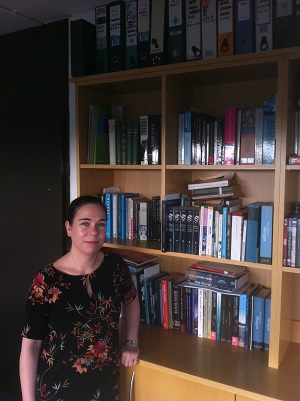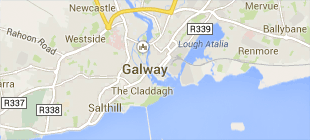Textual Cultures
Textual Cultures
Leader:
Prof. Marie-Louise Coolahan
Dr. Adrian Paterson
Members:
Prof. Marie-Louise Coolahan (English)
Dr Adrian Paterson (English)
Professor Sean Ryder (English)
Professor Daniel Carey (English)
Dr Rebecca Barr (History)
Dr Dermot Burns (History)
Dr Clíodhna Carney (English)
Professor Adrian Frazier (English)
Professor Margaret Mills Harper (University of Limerick)
Dr Timothy Keane (English)
Dr Julia Kilroy (English)
Dr Patrick Lonergan (Centre for Theatre & Performance)
Dr Frances McCormack (English)
Dr Charlotte McIvor (Centre for Theatre & Performance)
Dr Muireann O’Cinneide (English)
Dr Niall Ó Ciosáin (History)
Dr Riana O’Dwyer (English)
Dr. Richard Pearson (English)
Prof. Lionel Pilkington (English)
Dr Tina-Karen Pusse (German)
Dr Irina Ruppo-Malone (English)
Professor Bill Richardson (Spanish)
Dr Lorna Shaughnessy (Spanish)
Dr Mark Stansbury (Classics)
Dr Elizabeth Tilley (English)
Dr Justin Tonra (English)
Description:
 |
What is a text? Where is a text? How does a text come about, and where is it directed? How do texts describe and represent the world? What are the aesthetic, cultural and political implications of specific textual representations? All these have become central questions in recent scholarship. Our proposed Priority Research Area (PRA)Textual Cultures consciously adopts interdisciplinary perspectives to address all questions concerning textual production, formation, transmission, and affect, bringing together colleagues from across the School of Humanities, the School of Languages, Literatures and Cultures, and the School of Geography and Archaeology. Textual Cultures insists on the benefits of a diversity of methodologies, as well as the organic effects achieved from a common pooling of resources, ideas, and activities: such a community expands the horizons of textual scholarship by promoting and disseminating a multiplicity of approaches to the field. As Homi K. Bhabha puts it, ‘interdisciplinarity is not merely a scholarly method [but] represents an ethical commitment to promoting a diversity of perspectives’. The very diversity of textual cultures thus demands a diversity of responses. By sharing expertise over a range of chronological periods, languages, aesthetic approaches, theoretical constructs, and material and historical formations, Textual Cultures cuts across the narrow divisions of periodicity and discipline to construct a dynamic research community of international reach.
Through a process of conceptualization the empirical world comes to be represented in linguistic signs, resonant symbols, textual markings, or digital images. Textual Cultures reflects as much on these processes of mediation as on the outcomes of knowledge, drawing attention to the frames, maps, or tables with which we construct our access to reality at one remove, considering the relationships between signs and things, and on the processes which join the real world to the imagination. It thus opens up philosophical speculation into the nature of textual recording and representation; intimately and rigorously examines the myriad processes of artistic creation and production; and engages vital questions of cultural value by putting under scrutiny changing artistic self-conceptions and aesthetic principles. The twenty-first century faces a defining moment of transition in textual disseminations, and thus of consciousness: probably at no time in history has reflecting on the nature of textual cultures been more important to scholarship. Textual Cultures responds to this new awareness of textual formations by expanding on new developments in humanities and social sciences research. As a community it places a central importance on literary approaches and practices in relation to texts of all descriptions and epochs, and puts the latest analyses of language use, artistic creation, and writing strategies at the heart of its discussions. It argues that textual cultures not only reflect but create political and social realities and constructions, and so explores the interaction of textual traces across different human settlements and languages, drawing on new perspectives and existing strengths in the fields of political and social study, including in colonial and postcolonial cultures. While thus respecting the singularity of specific material manifestations of textuality, and the diverse approaches to such cultures, it builds on shared expertise in examining markings and inscriptions, manuscript and print practices of all ages, and so becomes best placed to explore the cultural interactions of texts in all their forms, from Ogham stone to newspaper, from playscript to film, from illuminated manuscript to blog. Developing recent work that expands the fields of material culture and book history it employs new bibliographical and paratextual paradigms to shape new readings and editorial practices in print and in hypertext; an emphasis on sociocultural and historiographical readings allows for exciting new interactions with anthropology, theatre and performance studies, social sciences, palaeography, and archaeology. Such a diversity of approach remembers that investigating the circulation and dissemination of texts creates not only histories of publishing and capital, but complex histories of readership and cultural exchange. Nor does this approach underplay the role of orality, aurality and performance in creating notional and real audiences, from hymnal to sean nós to broadcast. This interrogation of the idea of site-specific locations of centres of cultural production speaks directly to burgeoning scholarship investigating the broader functioning of cultural industries and imagined communities, and leads naturally into questioning and defining the new applications and implications of digital cultures and media new and old from a local and a global perspective.
Status: On-going

